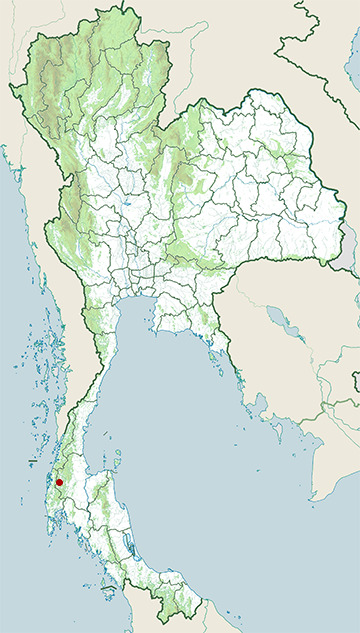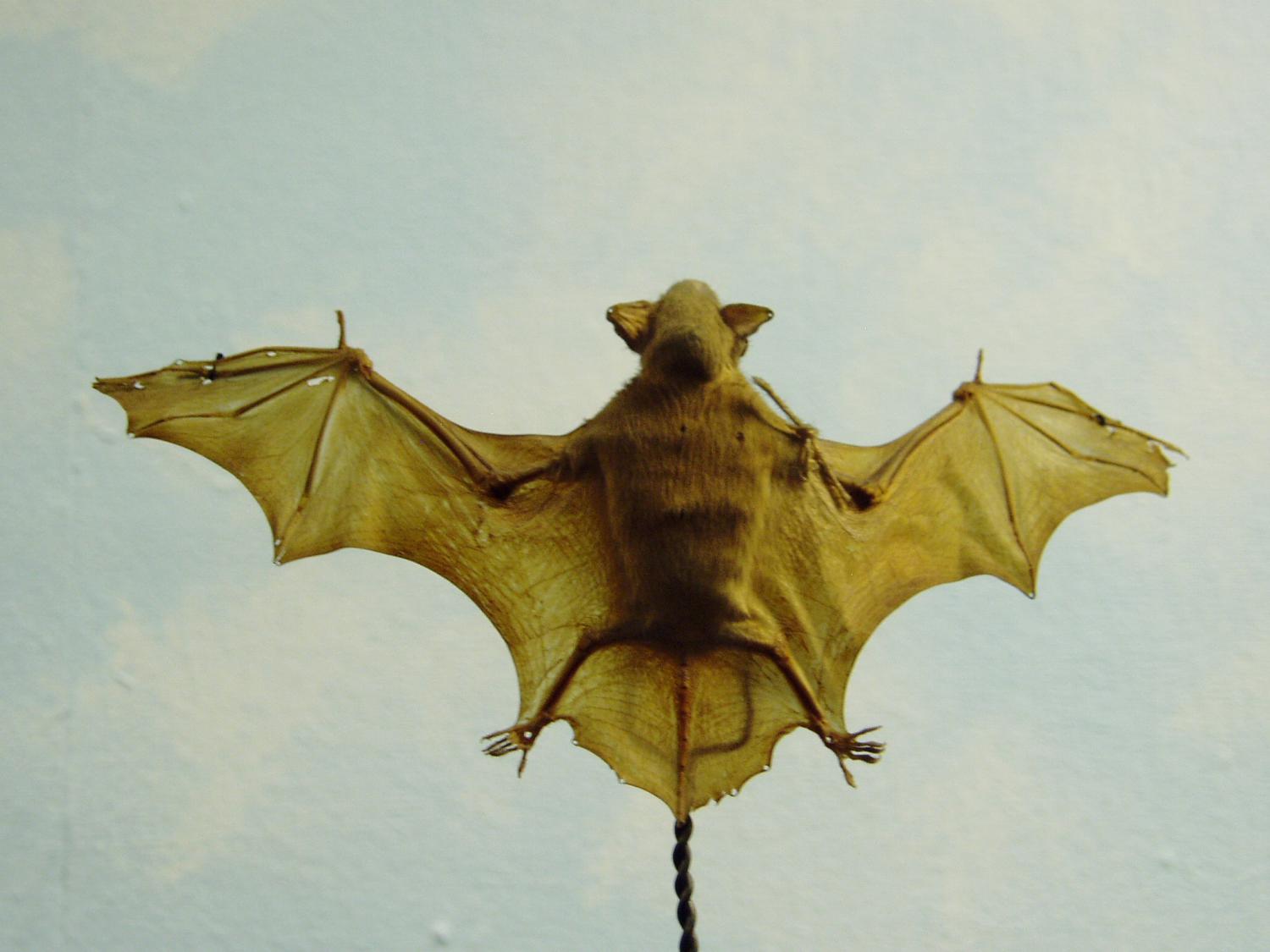Species of Thailand
Lesser bamboo bat
Tylonycteris pachypus
(Coenraad Jacob Temminck, 1840)
The lesser bamboo bat or lesser flat-headed bat (Tylonycteris pachypus) is one of the smallest species of vesper bat, and is native to Southeast Asia.
Description
The bat, the size of a bumble bee, is among the smallest mammals on earth, measuring about 4 cm in head-body length with a tail about 2.5 cm long and a wingspan of 19 cm. Adults weigh between 1.4 and 5.2 g.
The fur ranges from golden or cinnamon to dark brown, and is paler on the underside of the body. The head is flattened, with a short snout and triangular ears with a wide tragus. The name pachypus means "thick-footed" and refers to the presence of smooth fleshy pads at the base of the thumb and on the heels of the feet, which help the bat grip onto bamboo stalks. The wings have an aspect ratio of 6.2, allowing the bat to be agile in flight at the expense of a slow speed.
A 4.8 gram T. pachypus has about an 80 mg brain.
Distribution and habitat
Lesser bamboo bats are found throughout Southeast Asia from Bangladesh to southern China and Indonesia and also in southern and eastern India. It inhabits deciduous forests with extensive areas of bamboo growth, at altitudes from sea level to 1260 m.
Five subspecies are recognised:
- Tylonycteris pachypus aurex - India and Bangladesh
- Tylonycteris pachypus bhaktii - Lombok
- Tylonycteris pachypus fulvidus - China, Indochina
- Tylonycteris pachypus meyeri - Philippines
- Tylonycteris pachypus pachypus - Indonesia
Biology and behaviour
Lesser bamboo bats typically roosts in the slit bored into the shoots of bamboo by leaf beetle larvae. The entrance slit to such cavities is too restrictive for most predators, such as snakes, but the flattened head of the bamboo bat allows it to enter. Although the exact species vary across their range, in Malaysia, the preferred bamboo is Gigantochloa scortechinii, and the beetles are most commonly Lasiochila goryi. The bats sometimes use rock crevices or holes in trees as alternative roosting sites. Females tend to roost in small groups of about five individuals, although larger groupings of up to 38 have been reported. Males roost alone, or in small groups of up to six. Individuals switch roosts every day, and larger groupings tend to be temporary.
The bats are insectivorous, with flies, beetles, and hymenopterans forming the bulk of their diet. They catch insects on the wing, using echolocation calls that start at 125 kHz and drop to 50 kHz.
Reproduction
Lesser bamboo bats are polygynous, with females mating with multiple males throughout the September to November breeding season. Unusually for a tropical species, the females store the sperm after mating, with ovulation and fertilisation not occurring until January. Gestation lasts 12 to 13 weeks, with the young being born between April and May. Most births are of non-identical twins, although identical twins, singletons, and triplets are born on occasion.
Newborn young are blind and hairless and weigh about 0.6 g. The mother carries her young for the first couple of days, but then leaves them behind in the bamboo chamber. The young are weaned and able to fly 22 to 25 days after birth. When their fur first begins to grow it is dark in colour, taking on the lighter and more reddish adult hue by October of their first year. Both males and females are sexually mature by the start of the first breeding season after birth.
Parasites
Bat flies which have the lesser bamboo bat as its host include Basilia brevipes, Basilia majuscula, and Basilia fletcheri.
This article uses material from Wikipedia released under the Creative Commons Attribution-Share-Alike Licence 3.0. Eventual photos shown in this page may or may not be from Wikipedia, please see the license details for photos in photo by-lines.
Scientific classification
- Kingdom
- Animalia
- Phylum
- Chordata
- Class
- Mammalia
- Order
- Chiroptera
- Family
- Vespertilionidae
- Genus
- Tylonycteris
- Species
- Tylonycteris pachypus
Common names
- English:
- Indomalayan lesser bamboo bat
- Amber bamboo bat
Subspecies
Tylonycteris pachypus aurex, Michael Rogers Oldfield Thomas, 1915
Tylonycteris pachypus bhaktii, Oei, 1960
Tylonycteris pachypus fulvidus, Edward Blyth, 1859
Tylonycteris pachypus meyeri, Wilhelm Karl Hartwich Peters, 1872
Tylonycteris pachypus pachypus, Coenraad Jacob Temminck, 1840
Conservation status

Least Concern (IUCN3.1)
Photos
Please help us review our species pages if wrong photos are used or any other details in the page is wrong. We can be reached via our contact us page.
Range Map

- Khao Sok National Park
